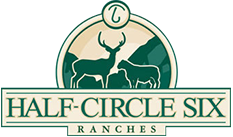You would think in an area where a lot of sheep are produced you’d be able to find a reliable source of lamb in a local retail market. But that is not the case around San Angelo, Texas. Or at least it hasn’t consistently been the case. Some of the lamb cuts you do find could be American lamb or they could be imported lamb, depending on price and availability for the retailer or retail chain. And, the quality of what is available can vary as well from tough and mutton like to tender and mild. Philip Glass, who ranches at Water Valley, near San Angelo, has identified that problem and the potential market locally and even nationally for a reliable supply of consistently high quality lamb cuts.
Glass’s goal is not to serve discount retailers or grocers. He is offering Dorper lamb as a gourmet product at a price that’s only slightly higher than the currently going rate for lamb. Philip sells premium Dorper cuts currently around $12 per pound for lamb chops and $20 a pound for rack of lamb.
Philip, wife Jennifer and children James, Hannah, and Jasper raise Dorper sheep, Angus cattle, and exotic game animals at Half-Circle Ranch just northwest of San Angelo. It’s the Dorper breed that makes the difference, Glass said, in the quality of lamb he offers for sale.
“We’ve got all the conventional cuts,” he said. He offers boneless leg, boneless shoulder, loin chops, rib chops, rack of lamb, lamb shank and leg steak, as well as ground lamb.
Glass said people are timid about trying lamb for dinner because they’re afraid they don’t know how to cook it. They think that if they cook it wrong it will have a mutton taste. Not true for Dorper lamb, he said.
Americans only consume eight tenths of a pound of lamb annually on a per-person basis compared to the USDA estimate of around 65 pounds of beef per person per year. One reason for that is because some people don’t like lamb or have the perception that they don’t like it because they’ve only had strong tasting lamb. And, lamb is price prohibitive for many consumers at $10 per pound in the supermarket when beef prices are much lower on average. Another reason lamb consumption is low is lack of availability or only seasonal availability.
Philip and Jennifer are hoping to change that, at least locally and for their online customers, by keeping a steady supply of Dorper lamb.
Is the current U.S. Dorper population big enough to satisfy demand? On this level, yes, Glass said. And because the breed is popular and easy to care for, more and more ranchers will be raising Dorpers, he added.
Glass selects potential slaughter lambs from his commercial Dorper flock, consisting of all high percentage Dorpers. “We just kind of fatten them up and round them off before they go to slaughter. They don’t stay on feed a long period of time.” The lambs get a 14 percent commercial grain ration and free choice hay for one to three months until they come up to target size, about 110 pounds at 6 to 8 months of age. Then they go to slaughter.
Glass has been sending groups of lambs to a small processor in Miles that is federally inspected. That’s currently a requirement for interstate sale of meat, and Pecans.com sells some of the lamb to customers in other states online. “We were wanting to brand the product to show that we have something different, so we made our own label, ‘Half-Circle Six Ranches Dorper Lamb’” Glass said. Another part of the label claims “Natural Dorper Lamb” because it’s a natural product, meaning no hormones were used in production and the meat is minimally processed.
The Glass family has been raising Dorper sheep since 1997 and looks forward to more opportunities and markets from breeding stock to meat sales in the future.
Gary Cutrer
